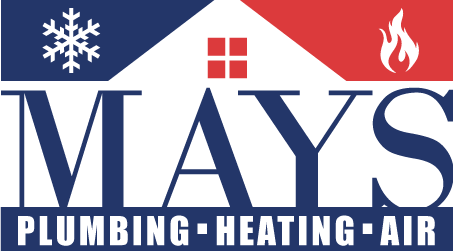How to Identify Essential Roof Maintenance Tasks to Keep Your Home Safe
Maintaining a roof is crucial for safeguarding your home from environmental elements. Regular maintenance prolongs the lifespan of your roof and ensures safety for all who reside within. This article outlines how to identify essential roof maintenance tasks that can help you keep your roof in optimal condition.
Understanding Roof Types
To effectively maintain a roof, it’s essential first to understand the type of roof you have. Different materials require varying approaches to maintenance. Common roof types include:
- Asphalt Shingles: The most common residential roofing material. It may curl or wear due to extreme temperatures.
- Metal Roofing: Known for durability and resistance to harsh weather. Requires checks for rust or corrosion.
- Tile Roofing: Extremely long-lasting but can crack under heavy impacts.
- Flat Roofing: Prone to pooling water. Regular inspections are necessary to check for deterioration.
Key Maintenance Tasks
Identifying essential roof maintenance tasks involves knowing what to look for and performing regular checks. Below are critical tasks to incorporate into your maintenance routine:
1. Regular Inspections
Routine inspections should occur at least twice a year—ideally in the spring and fall. During these inspections, look for:
- Missing or damaged shingles
- Pooled water
- Signs of mold or algae
- Damaged flashing
2. Cleaning Gutters and Downspouts
Clogged gutters can lead to water build-up and possible roof damage. To maintain clear drainage:
- Remove leaves, twigs, and debris from gutters regularly.
- Ensure downspouts direct water away from the foundation.
- Consider installing gutter guards to reduce the frequency of cleanings.
3. Addressing Repairs Promptly
Any damage identified during inspections should be repaired promptly. Ignoring minor issues can lead to costly repairs down the line. Common repairs include:
- Replacing missing or damaged shingles.
- Seal leaks in flashing and seams.
- Reinforcing areas where wear is noticeable.
4. Ventilation and Insulation
Proper ventilation helps prevent heat and moisture build-up in the attic. Insufficient ventilation can lead to:
- Increased energy costs
- Ice dams in winter
- Premature roofing material wear
Ensure that your attic has adequate vents and that insulation levels are appropriate for your climate.
5. Trimming Overhanging Branches
Tree branches that hang over your roof can cause significant damage during storms. To protect your roof:
- Trim branches to prevent them from falling on the roof.
- Ensure at least a six-foot clearance from the roof edge.
Signs of Potential Issues
Monitoring your roof for early signs of trouble is essential. Here are some indications that maintenance tasks may be required:
1. Shingle Condition
Curling, cracking, or shedding granules from shingles can indicate that they are reaching the end of their lifespan.
2. Water Stains
Water stains on ceilings or walls can signal leaks in the roof. These require immediate attention to prevent further damage.
3. Vegetation Growth
The presence of moss or algae can trap moisture, which may damage roofing materials over time. Regular cleaning is advised.
Seasonal Considerations
Different seasons bring their own unique challenges for roof maintenance.
Spring
Spring is an ideal time for inspections and cleanings. Check for winter-related damage and clear debris from gutters.
Summer
High temperatures can lead to thermal expansion and potential shingle deformation. Schedule repairs and ensure proper ventilation.
Fall
Prepare your roof for winter by cleaning gutters and trimming overhanging branches. Inspect for any damage before the snow arrives.
Winter
During winter, monitor for ice dams and icicles. These can indicate poor insulation or inadequate ventilation. Remove snow buildup carefully.
Hiring Professionals vs. DIY
Roof maintenance often raises the question of DIY versus hiring professionals. Each option has its pros and cons:
When to DIY
- Simple tasks like gutter cleaning or debris removal.
- Basic inspections to check for visible damage.
When to Hire Professionals
- Significant repairs that involve structural issues.
- Complex inspections or maintenance tasks.
- Roof replacements or installations.
Conclusion
Identifying essential roof maintenance tasks is vital for the safety and longevity of your home. Regular inspections, timely repairs, cleaning, and awareness of signs indicating potential issues can keep your roof in great condition. By taking these steps, you not only protect your investment but also ensure the safety and comfort of your household.
Author: STAFF HERE HILTON HEAD
The HILTON HEAD STAFF WRITER represents the experienced team at HEREHiltonHead.com, your go-to source for actionable local news and information in Hilton Head Island, Beaufort County, and beyond. Specializing in "news you can use," we cover essential topics like product reviews for personal and business needs, local business directories, politics, real estate trends, neighborhood insights, and state news affecting the area—with deep expertise drawn from years of dedicated reporting and strong community input, including local press releases and business updates. We deliver top reporting on high-value events such as the RBC Heritage golf tournament, Hilton Head Island Wine & Food Festival, and the Gullah Celebration. Our coverage extends to key organizations like the Hilton Head Island-Bluffton Chamber of Commerce and Community Foundation of the Lowcountry, plus leading businesses in tourism and hospitality that power the local economy such as Sea Pines Resort and Sonesta Resort Hilton Head Island. As part of the broader HERE network, including HEREAiken.com, HEREBeaufort.com, HEREChapin.com, HERECharleston.com, HEREClinton.com, HEREColumbia.com, HEREGeorgetown.com, HEREGreenwood.com, HEREGreenville.com, HEREHiltonHead.com, HEREIrmo.com, HEREMyrtleBeach.com, HERENewberry.com, HERERockHill.com, and HERESpartanburg.com, we provide comprehensive, credible insights into South Carolina's dynamic landscape.




 Mays Contracting
Mays Contracting

